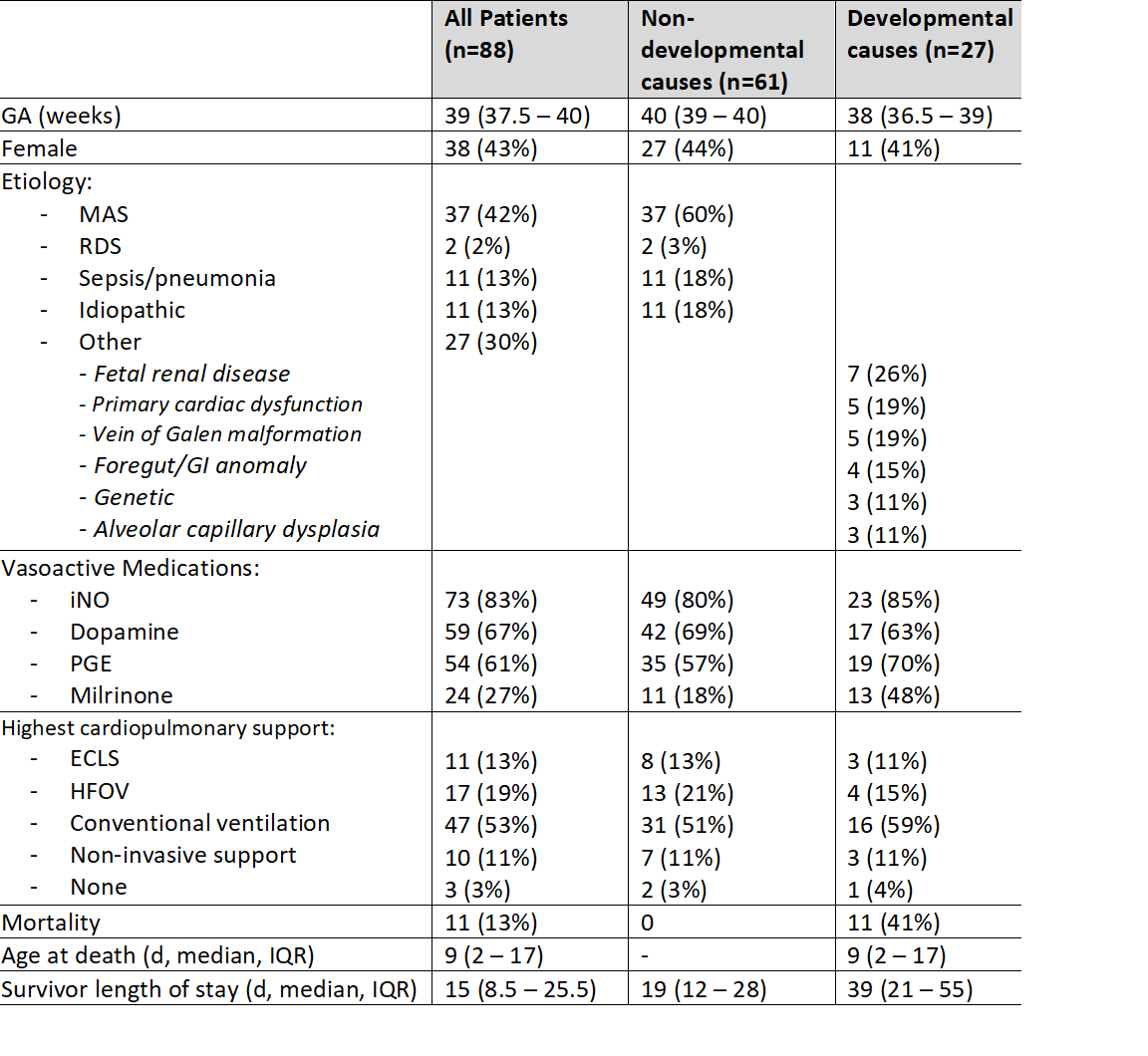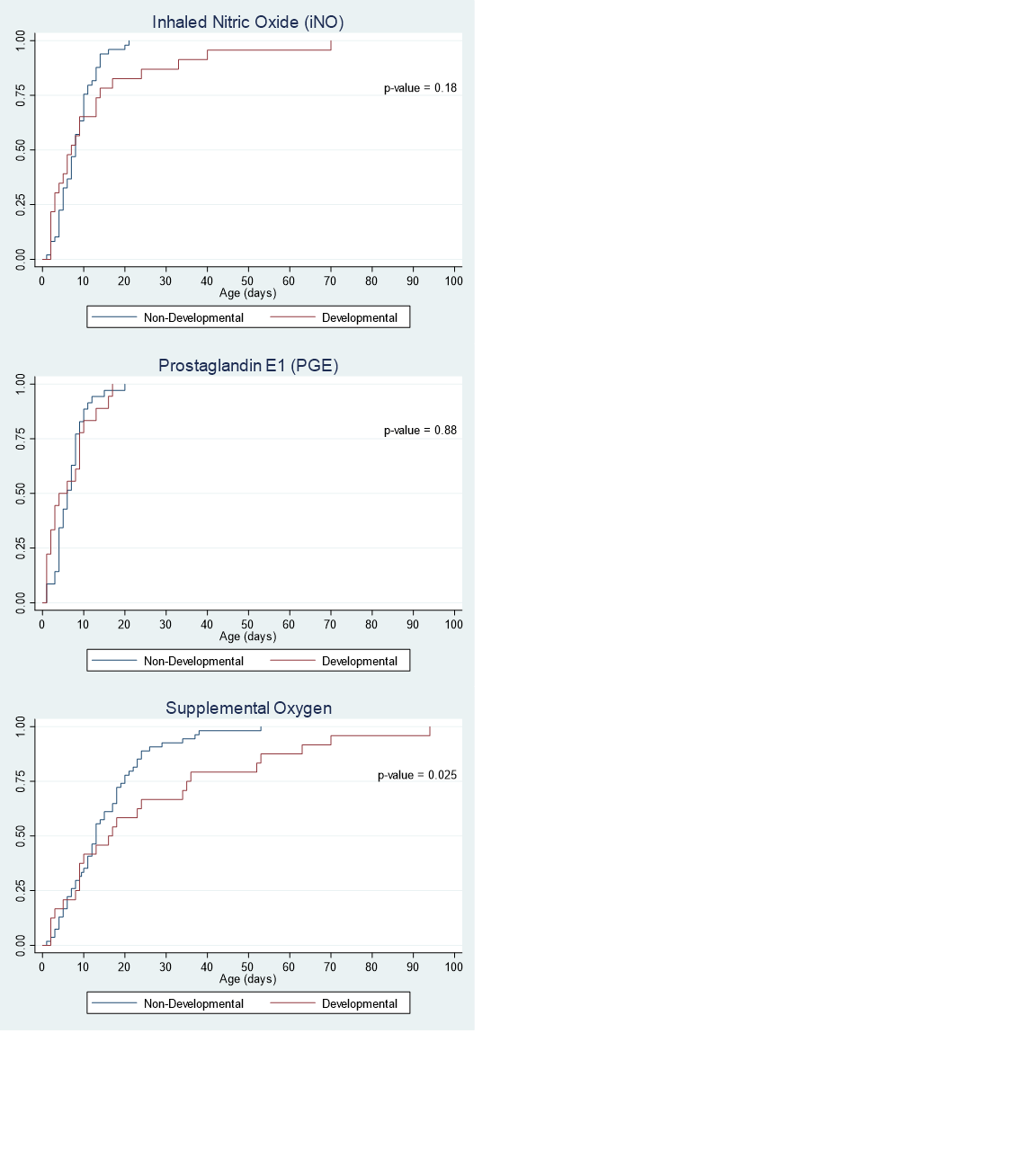Neonatal Cardiac Physiology/Pathophysiology/Pulmonary Hypertension
Neonatal Cardiac Physiology/Pathophysiology/ Pulmonary Hypertension 4
107 - Defining the typical course of PPHN: when to think beyond reversible causes
Publication Number: 107.426
- ST
Stephanie M. Tsoi, MD (she/her/hers)
Fellow
UCSF Benioff Children's Hospital San Francisco
San Francisco, California, United States
Presenting Author(s)
Background: The diagnosis of PPHN often suggests a short term, reversible type of neonatal PH due to causes such as meconium aspiration syndrome (MAS), respiratory distress syndrome (RDS), or sepsis/pneumonia. Developmental disorders (e.g., fetal renal disease, vein of galen malformation, alveolar capillary dysplasia/misalignment of pulmonary veins, other genetic disorders or lung dysplasias) represent etiologies of neonatal PH which are variably reversible. Knowing the typical course of illness for reversible PPHN informs further work-up for developmental disorders when neonatal PH fails to resolve.
Objective: To describe the typical clinical course of PPHN due to reversible causes.
Design/Methods:
Single-center retrospective cohort study including newborns born 2015–20 with gestational age ≥ 35 weeks. Additional inclusion criteria were initiation of inhaled nitric oxide (iNO) by 7d of age or PPHN diagnosis. Newborns were excluded if they had complex congenital heart disease, diaphragmatic hernia, or withdrawal of care for non-pulmonary causes. Newborns were classified by the etiology of PPHN using all available data (including genetic testing and autopsy): non-developmental (MAS, RDS, sepsis/pneumonia, idiopathic) and developmental. We described the clinical course by PPHN etiology (non-developmental versus developmental) using Kaplan-Meier (K-M) curves and compared curves by the log-rank test.
Results: 88 newborns were included; 61 newborns had PPHN attributable to a non-developmental cause and 27 newborns had PPHN due to a developmental disorder. The most common non-developmental cause of PPHN was MAS (37/61, 61%, Table). Highest level of respiratory support was similar between groups, including extracorporeal life support (ECLS) use, but ECLS duration tended to be longer for infants with a developmental cause of PPHN: median 9d (range 1-11d) versus 6d (range 4-9d). K-M curves alive off support (Figure) were significantly different for supplemental O2 (p=0.025), but not for iNO (p=0.18) or PGE (p=0.88), suggesting more rapid resolution of illness in infants with non-developmental cause of PPHN. 75% of neonates with non-developmental etiology of PPHN were alive and off iNO at 10d of age and supplemental O2 at 20d of age. Whereas only 65% of developmental PPHN was off iNO at 10d and 58% off supplemental O2 at 20d.
Conclusion(s): Neonatal PPHN due to non-developmental causes is self-limited. Infants that stray from this course without an identifiable cause warrant further evaluation with genetic testing, lung biopsy, or advanced imaging.

